‘La Serenissima’
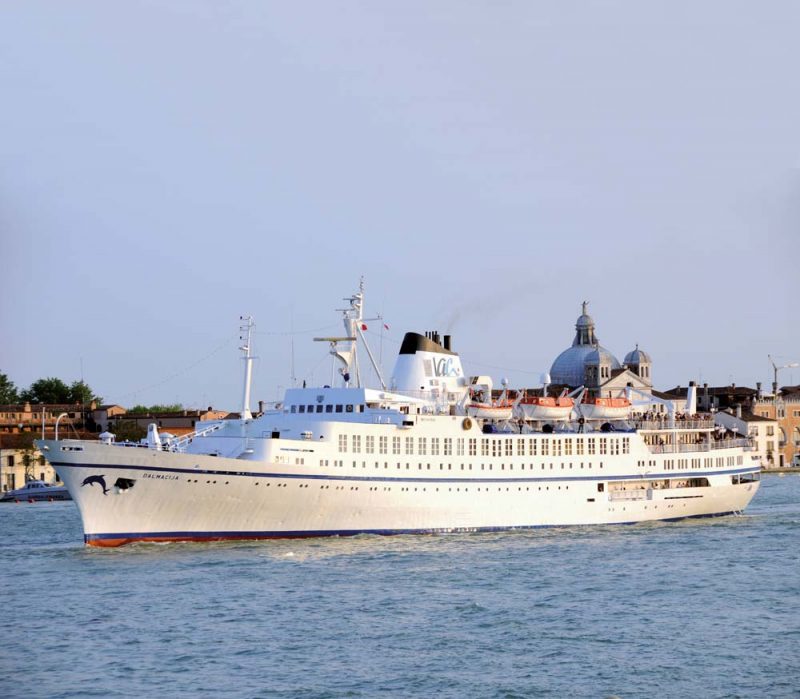
Venice is known as ‘La Serenissima’ and is the eighth busiest port in Italy, and one of the most important cruise ports of the Mediterranean and is a major hub for cruise ships. In 2017, 466 cruise ships called at the Venezia Terminale Passeggeri (VTP) on the Isola di Tronchetto carrying 1.447 million cruise passengers. Some 204,000 ferry passengers also disembarked at the port, while five miles away on the mainland the Port of Marghera handled 25.135 million tonnes of cargo, comprising 8.787 million tonnes of oil and petrochemicals, 6.847 million tonnes of dry bulk cargo, and 9.501 million tonnes of general cargo. The Port of Marghera is part of and integrated into the Port of Venice, and the combined ports have seen seventy million euros invested during the last twenty years in their infrastructures.
History of the Republic of Venice (697-1797)
The history of Venice traditionally begins with the foundation at noon on 25th March 421 AD by the authorities from Padua of a trading post in the lagoon of Venice. Venice did not exist in Roman times, and the early years of the trading post saw peoples existing on the coastal plains and beaches of the Lido breakwater island of the lagoon for mutual defence against the Lombards. The Venetians proclaimed in the year 697 their first Doge (Duke) in Paolo Lucia Anafesto, and the power base of the Republic of Venice began to increase. The power of the Byzantine empire began to wane in Northern Italy in the late seventh century, and the Venetians began to expand and capture most of the Istrian peninsula, and the Dalmatian towns of Zara (now Zadar), Spalato (now Split), and Ragusa (now Dubrovnik) by the year 1000. The Venetian Empire became wealthy in the Middle Ages through its control of the trade routes between Europe and Greece, the Black Sea and the Eastern Mediterranean. Overland trades from Asia to the Black Sea on the Silk Road were extended by the Venetians into the Mediterranean and Adriatic using nodal points on commercial networks.
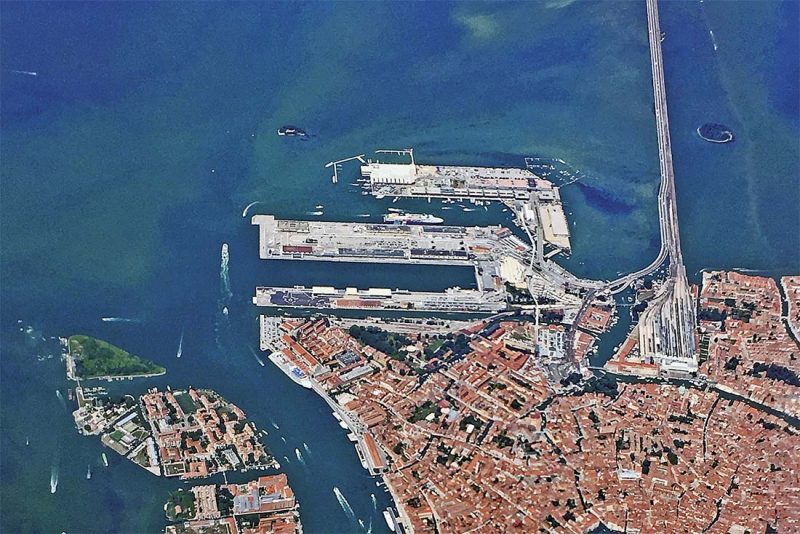
Venice was involved in the Crusades from the very beginning when two hundred Venetian ships assisted in the capture of the coastal towns of Syria after the First Crusade, and in the year 1123 they were granted virtual autonomy of the Kingdom of Jerusalem through the Pactum Warmundi. In the year 1110, Ordelafo Faliero personally commanded a fleet of one hundred Venetian ships to assist King Baldwin of Jerusalem in capturing the city of Sidon. The Venetians also gained extensive trading rights with the Byzantine Empire, and the Venetian Arsenal shipyard often provided the Byzantines with a navy.
The Venetian fleet was built at a large Arsenal, or national shipyard, from the 12th century, and with powerful and large fleets they took over control of coastal towns on the Ionian Sea, Peloponnese, Crete, Rhodes and most of the islands of the Aegean. The Arsenal shipyard had a main gate with the winged lion of St. Mark at its top, and the main water gates for ships to enter and leave were protected by fortified twin towers and portcullises to prevent enemy ships from entering.
Venice grew rich in providing the transportation and commercial networks of the Eastern Mediterranean e.g. it provided the fleet for the Fourth Crusade, but when the crusaders could not pay for the chartering of the fleet, Doge Enrico Dandolo offered time to pay in exchange for their aid in recapturing Zara, which had rebelled against Venetian rule in the year 1183. The Venetians and the crusaders captured Constantinople, instead of a crusade to the Holy Land, after a siege in 1204, and saved precious artistic works, stone sculptures, and other works such as the ‘Four Bronze Horses’ and took them back to Venice. The Byzantine Empire was partitioned after the fall of Constantinople, and Venice gained strategic territory and islands in the Aegean Sea amounting to almost 40% of the Byzantine Empire.
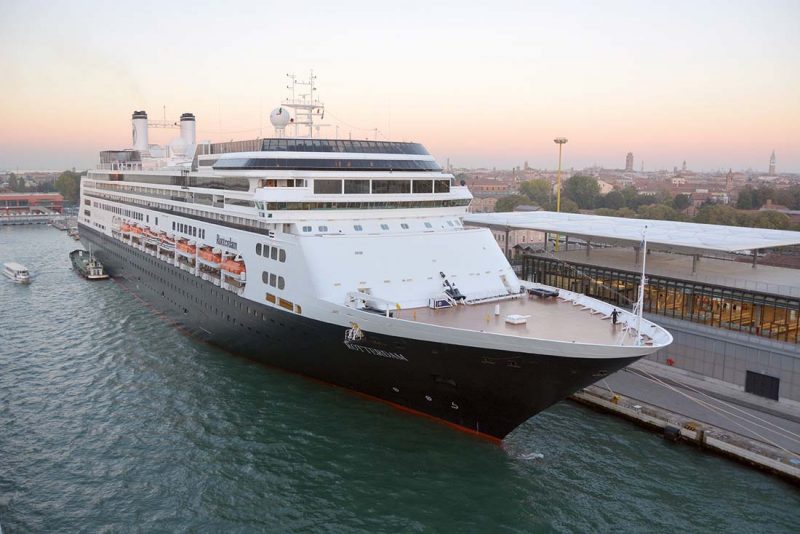
The plague of the ‘Black Death’ struck Venice in 1348 and devastated the population, with Venice introducing quarantine with ships and passengers arriving from infected areas having to wait at the quarantine island of Lazaretto for forty days before they were permitted to enter the city. By the year 1410, Venice had a merchant and naval fleet of 3,300 ships manned by 36,000 men, and had also taken control of the Italian cities of Padua and Verona. The shape of the main island of Venice and that of Giudecca island, and the canals and pathways had also evolved into the shape we know today by that year. Doge Francesco Foscari (1423-1457) expanded the Venetian Empire to its greatest ever extent by political or military means, taking the Italian cities of the modern Veneto region, Friuli, the provinces of Bergamo, Cremona and Trento as well as Ravenna, Istria and Dalmatia. Overseas control of the Aegean islands was continued and expanded to include Crete, Evvoia, Karpathos, Andros, Syros and the fortress town of Nauplia.
Constantinople fell to the Ottomans on 29th May 1453, but the Venetians managed to maintain a colony in the city and most of the former trading rights it had enjoyed with the Byzantines. Venice and its allies clashed with Ottoman forces in the Aegean, with Venice losing its main stronghold in the Aegean, the present day city of Chalkis on the island of Evvoia. The Venetians sought further alliances with Hungary and Persia, and made attacks on the Ottoman towns of Antalya, Halicarnassus and Smirne. The Ottomans attacked westward, but were forced to retire from the land that is present day Albania, while a revolt in Cyprus in 1473 against the Ottomans saw Cyprus become a Venetian colony. A peace treaty between Venice and the Ottomans on 24th January 1479 saw Venice giving up Argo, Chalkis, Lemnos and Scutari in exchange for Zakynthos and Kefalonia.
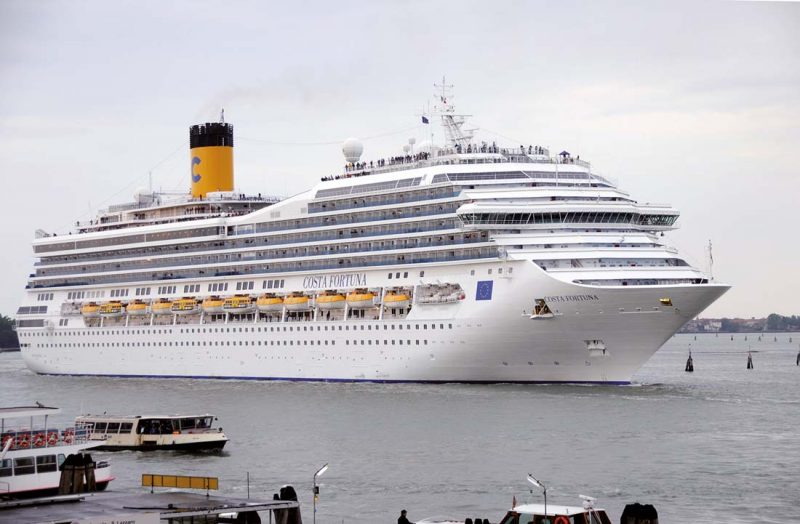
At the end of the 15th century, the Venetian Empire extended over 27,000 square miles with 2.1 million inhabitants, with Venice having 180,000 inhabitants as the second largest city in Europe after Paris. The French Ambassador in Venice, Philippe de Comines, wrote in 1485 that Venice was the most splendid city he had ever seen, and one that governed itself most wisely. The Venetian Republic controlled all of the Istrian, Dalmatian and Ionian coastlines, as well as Crete and all of the Aegean and Dodecanese islands except Rhodes, had temporary control of the Peloponnese, full control over Cyprus, and had trading routes to Malta, Tunis, Tripoli, Alexandria, the ports in Syria and Southern Turkey such as Antioch, as well as through the Bosphorus into the Black Sea.
Another outbreak of war with the Ottomans took place in 1570, with Venice now allied with Spain and the Catholic Pope in Rome as the Holy League. A fleet of 208 galleys of which over half came from the Arsenal in Venice, were victorious in the great battle of Lepanto on 7th October 1571. The Christian fleet was able to capture 117 galleys from the Turks, but this great victory was offset by the loss of Cyprus to the Ottomans in 1573. The peace treaty between Venice and the Ottomans after the Battle of Lepanto led to problems with the Austrian Empire, and also the Spanish Viceroy in Naples unwisely sent a fleet in 1617 into the Adriatic. The Spanish ambassador in Venice was implicated in the plot, and Ten Venetian leaders of their Senate ordered the execution of three Spanish ringleaders, and also demanded the immediate recall of the Spanish ambassador.
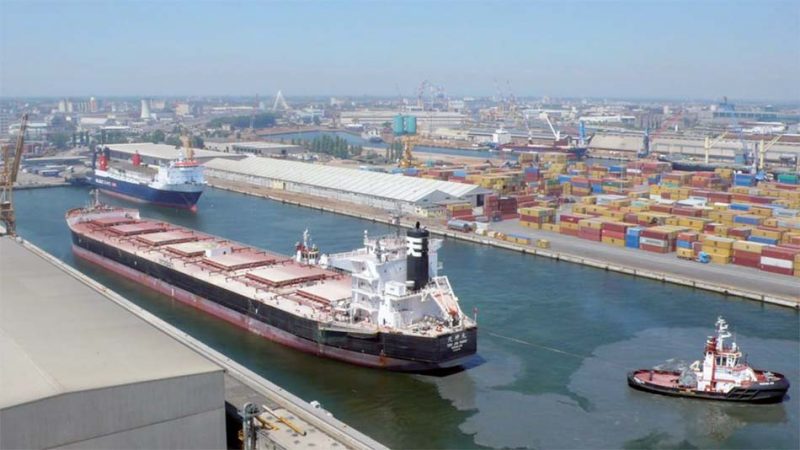

Renier Zen was elected in 1627 to the Council of Ten of the Venetian Senate, becoming ‘Zen of the Ten’. Zen was wise to the political intrigues of the Venetian political system, and was appointed Capt. General of the Venetian fleet that landed nine thousand men on the Aegean island of Chios and took it from the Ottoman Turks. Venice lost Chios to the Turks six months later, and the Venetian fleet returned to Venice. However, one of the vessels owned by Zen, the Abbondanza Richezza, laden with arms and ammunition, struck a rock on leaving harbour and was lost with most of her cargo.
In 1638, while the Venetian fleet was cruising off Crete, a Barbary Coast corsair fleet of sixteen galleys from Algiers and Tunis entered the Adriatic. When the fleet returned, the corsairs moved to the Turkish stronghold of Valona. The Venetian commander Marino Cappello attacked the corsairs, bombarded the forts and captured their galleys, freeing 3,600 prisoners in the process. The Sultan responded to the bombardment of his fortress by arresting the Venetian ambassador in Constantinople, and war was momentarily just averted. Six years later, the Ottoman attack against Candia, the main port of Crete, left no room for diplomacy, and the Cretan War fought by the Venetians against the Turks lasted 25 years, and was the dominant event of the whole of the history of the Venetian Republic during the 17th century.
The Venetian strategy regarding Turkish attacks on Crete was to blockade the Dardanelles in order to surprise the Turkish fleet on their way with troops to attack Crete. The Venetians won two victories in the ‘Sea Battles of the Dardanelles’ in 1655 and 1656, but a three day sea battle there in July 1657 turned into a defeat with Capt. Lazzaro Mocenigo killed by a falling mast. In 1666, an expedition by the Venetians to retake Chania from the Turks failed, and another attempt in conjunction with French forces also failed in 1669. Candia and 3,600 Venetians surrendered to the Turks on 6th September 1669, with Crete then ceded to the Turks while Venice retained the Aegean islands of Tinos and Cerigo and all of its bases on the Istrian, Dalmatian and Ionian coasts.
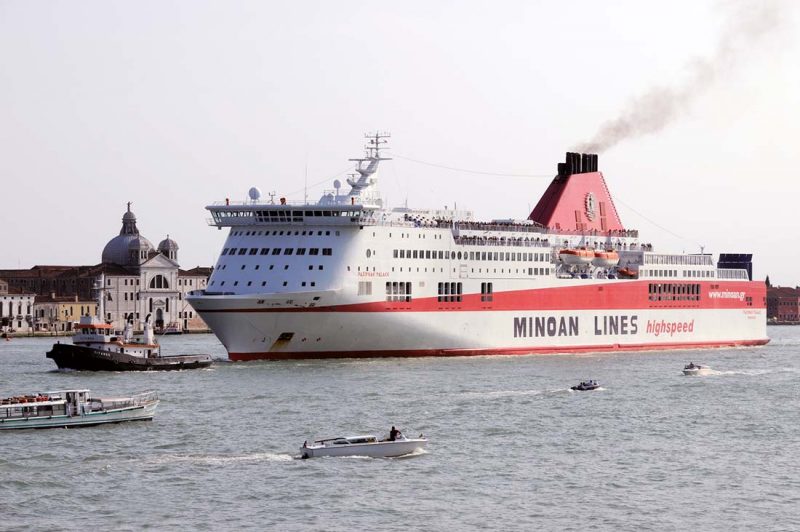
The decline of the Venetian Republic and the Venetian Empire began in 1714 when the Ottoman Turks declared war on the Republic. The Turks took the islands of Tinos and Aegina, and then crossed the isthmus to take Corinth. The fortresses at Nauplia, Modon, Cremone and Malvasia also fell to the Turks, and Lefkas in the Ionian Sea and the bases of Spinalonga and Suda on Crete were abandoned. This last war that Venice fought with the Ottomans ended with the Peace Treaty of Passarowitz on 21st July 1718, with Venice also losing Morea
The Venetian system of trade and commercial networks began to fall apart by 1784, and the last Venetian naval venture occurred between 1784 and 1786. A fleet under Admiral Angelo Emo blockaded Tunis and bombarded Sousse, Sfax, La Coletta and Bizerta after the pirates of Tunis renewed their activities with the full authority of the Bey of Tunis. Later, peace was made with Tunis by increasing the trade dues of the Bey of Tunis. By the year 1792, the once great Venetian trading fleet was down to only 309 vessels, and four years later the Republic of Venice found itself unable to defend the city. The French army of Napoleon Bonaparte entered the city on 12th May 1797 during the War of the First Coalition and his pursuit of the Austrian Army. After the first Peace Treaty of Leoben on 17th April 1797, Domenico Pizzamano of the Venetian navy fired on a French ship trying to enter the lagoon of Venice near the Lido forts. Napoleon Bonaparte declared war on 1st May 1797, and the final Peace Treaty of Campoformio was signed in Villa Manin in Passariano, the last Doge’s villa, with Venice and all of her possessions given to Austria on 18th October 1797.
After the fall of Napoleon Bonaparte at the Battle of Waterloo in 1815, Venice continued under Austrian rule. Giuseppe Garibaldi (1807-1882) with a force of one thousand volunteers conquered the Kingdom of the Two Sicilies (Naples and Sicily) in 1859, and with the aid of Prussian troops Venice was incorporated into the new Kingdom of Italy in 1866. A photograph of the Canale di Giudecca in the 1870s showed small coastal vessels on the quays near the Basin of San Marco, and also along the full length of the island of Giudecca. The railway reached Venice in 1846 over a 4.8 kilometre long causeway built out from the mainland known as the ‘Liberty’ bridge (Ponta della Liberta). Venice eventually gained a ‘Modernist’ style new Stazione di Venezia Santa Lucia railway station in 1952, and is decorated on the flanks of its façade by Venetian lions. Mussolini built a road from the mainland to Venice in 1933, which runs alongside the railway line. Venice was undamaged by the fighting of World War II, but the Jewish population had been deported.
The Stazione di Santa Lucia railway station was begun in 1860 by the Austrian Empire, with the then completed station taking the name of the church and convent that were demolished to make way for the railway station. The station we see today results from detailed plans for an improved station building worked up by architect Angiolo Mazzoni between 1924 and 1934, but its construction had to wait until after World War II when the final implementation was completed in 1952 to the plans of architect Paul Perilli. The station opens out on its other side onto the Grand Canal, and is a very familiar sight to tourists to obtain their bearings and continue their journey by gondola, water bus or water taxi.
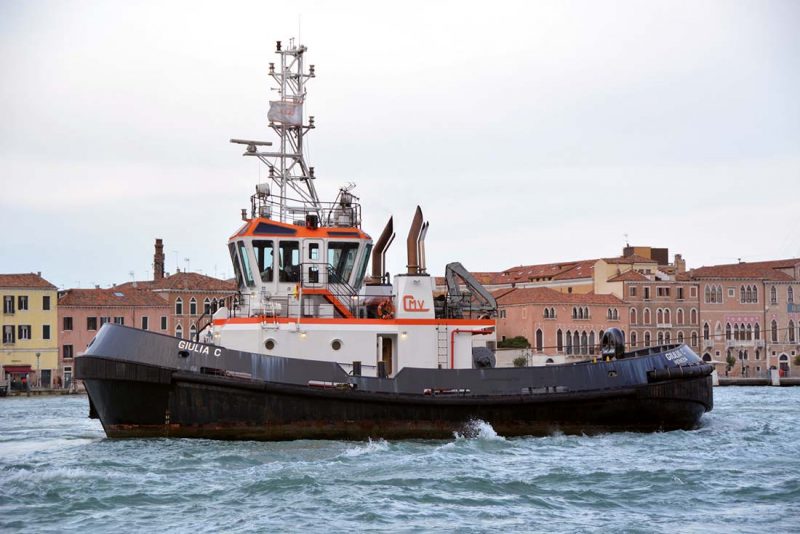
Modern Venice of the Present Day
Venice is the capital of the Veneto region of Northern Italy with a population of 264,000 and an economy based on tourism, and is built on over one hundred small islands in the Lago di Venezia lagoon at the northern end of the Adriatic Sea. Venice lies less than fifty miles west of the Istrian peninsula, and commands most of the trade arriving at the northern end of the Adriatic. Venice has no roads, only canals and pedestrian paths, including the Grand Canal thoroughfare snaking in an ‘S’ shape through the city from the Basin of San Marco to Stazione di Venezia Santa Lucia, and lined with Renaissance and Gothic palaces. The central square, Piazza San Marco, contains St. Mark’s Basilica, which is tiled with Byzantine mosaics, and the Campanile bell tower offers superb views of the red tiled roofs of the city.
Venice has expanded greatly, and today is divided into the six areas of the ‘Sestieri’, these being :-
- Cannargio including San Michele
- San Polo
- Dorsoduro including Giudecca and Sacca Fisola
- Santa Croce
- San Marco including San Giorgio Maggiore
- Castello including San Pietro di Castello and Sant’ Elena
The Port of Venice is located at position 45°24′ North, 12°29′ East, and is the only port in Italy to have an inland waterways terminal enabling small vessels to sail up the Po valley to Cremona and Mantua. The main port entrance is located at San Nicolo di Lido with a depth of 9.0 metres from where cruise ships, ferries, fast craft and yachts can reach the Marittima wharves and the Venezia Terminal Passeggeri (VTP). There is also another port entrance at the southern end of Lido island at Santa Maria del Mare and Malamocco with a depth of 14.0 metres for commercial and bulk cargo ships heading for the Port of Marghera, and another entrance further south at Chioggia and Sottomarina for yachts.
The network of the ship canals in the lagoon of Venice has a length of around seventy kilometres. The canal for large vessels connecting from the southern port entrance to the Port of Marghera is 18 kilometres long, while the various canals and basins including the Brentella Canal and piers ‘A’ and ‘B’ in Marghera have a total length of around 18 kilometres. Pier ‘A’ at Marghera was opened in 1940 after more than one thousand Venice dock workers had been transferred to North Africa to unload war material and ammunition for the Italian and German tank and infantry forces.
The average tide rises and falls in the Venice lagoon over a range of around 1.6 feet, while the flood tide can reach as much as 5.0 feet above average sea level, while neap tides can be as much as 4.0 feet below average sea level. The tidal currents reach a maximum rate of four knots at the Lido and Malamocco entrances. The Port of Venice is accessible for all vessels up to a maximum draft of 36.0 feet, including to the Venezia Terminal Passeggeri (VTP), which was in use in the 1950s as general cargo wharves with the Tronchetto and Marittima basins on either side of the Molo di Ponente (West Pier) and the Molo di Levante (East Pier). The ferry passenger terminal at this time was at the San Basilio wharf, with small cruise vessels using a wharf at the Riva Sette Martiri on the seaward side of the Basin of San Marco. The various quays in the Port of Venice had a length of 4,357 metres at this time, while those in the Port of Marghera had a length of over 3,000 metres. Cargo handling at the Marittima and San Basilio wharves ended in the Port of Venice during Millennium year, with all bulk loading and discharge then done at the Port of Marghera, with warehousing available at Pier ‘A’ and Pier ‘B’. Two grain elevators of capacity of 27,000 and 12,000 tonnes, previously in use at Venice, have now joined a Marghera grain elevator of capacity 50,000 tonnes.

Sign-up today to read the full article!
Simply click below to sign-up and read the full article, as well as many others, instantly!
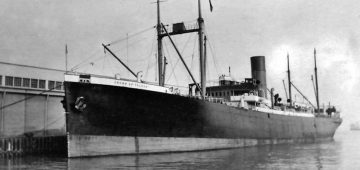




Comments
Sorry, comments are closed for this item